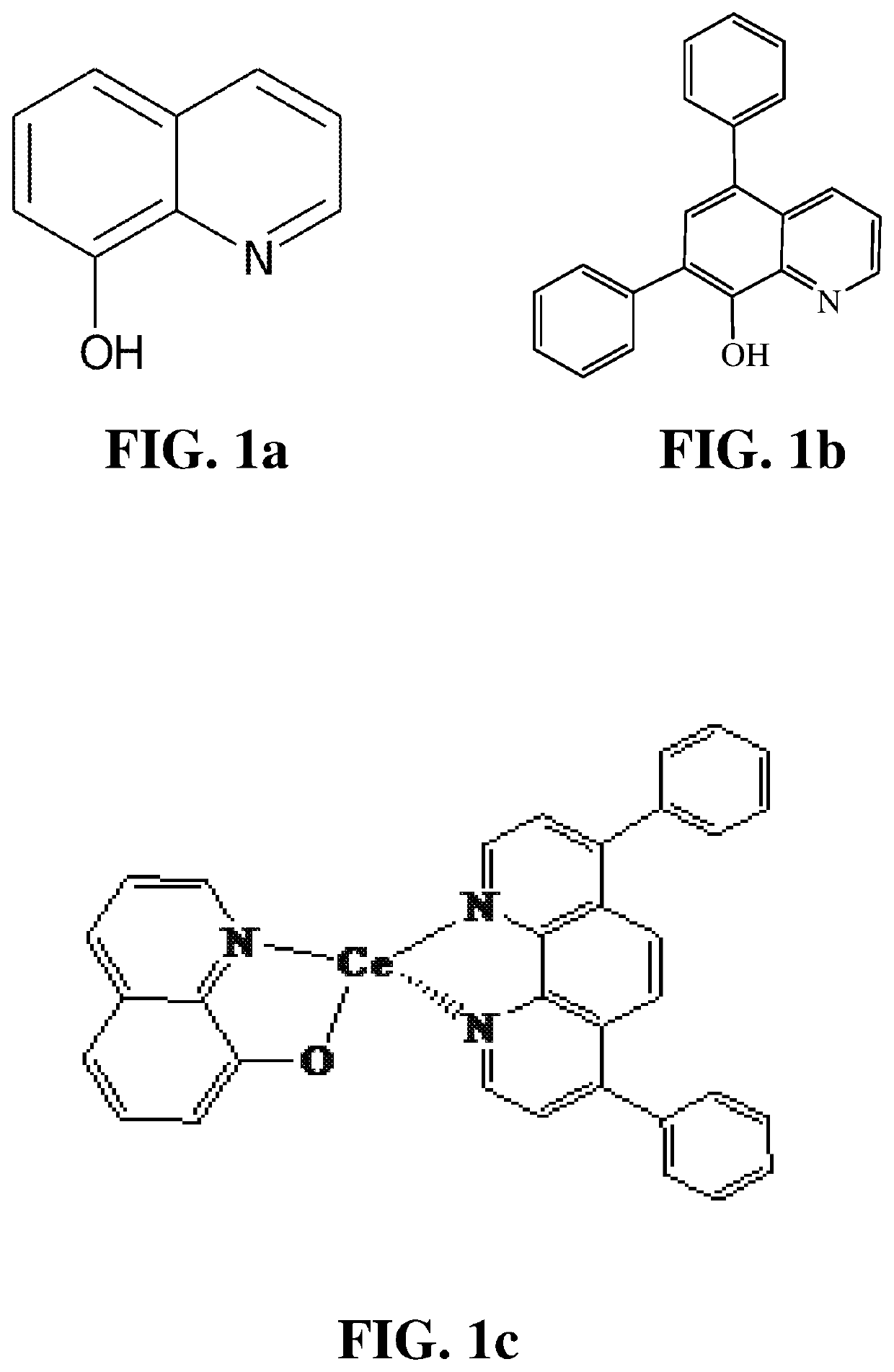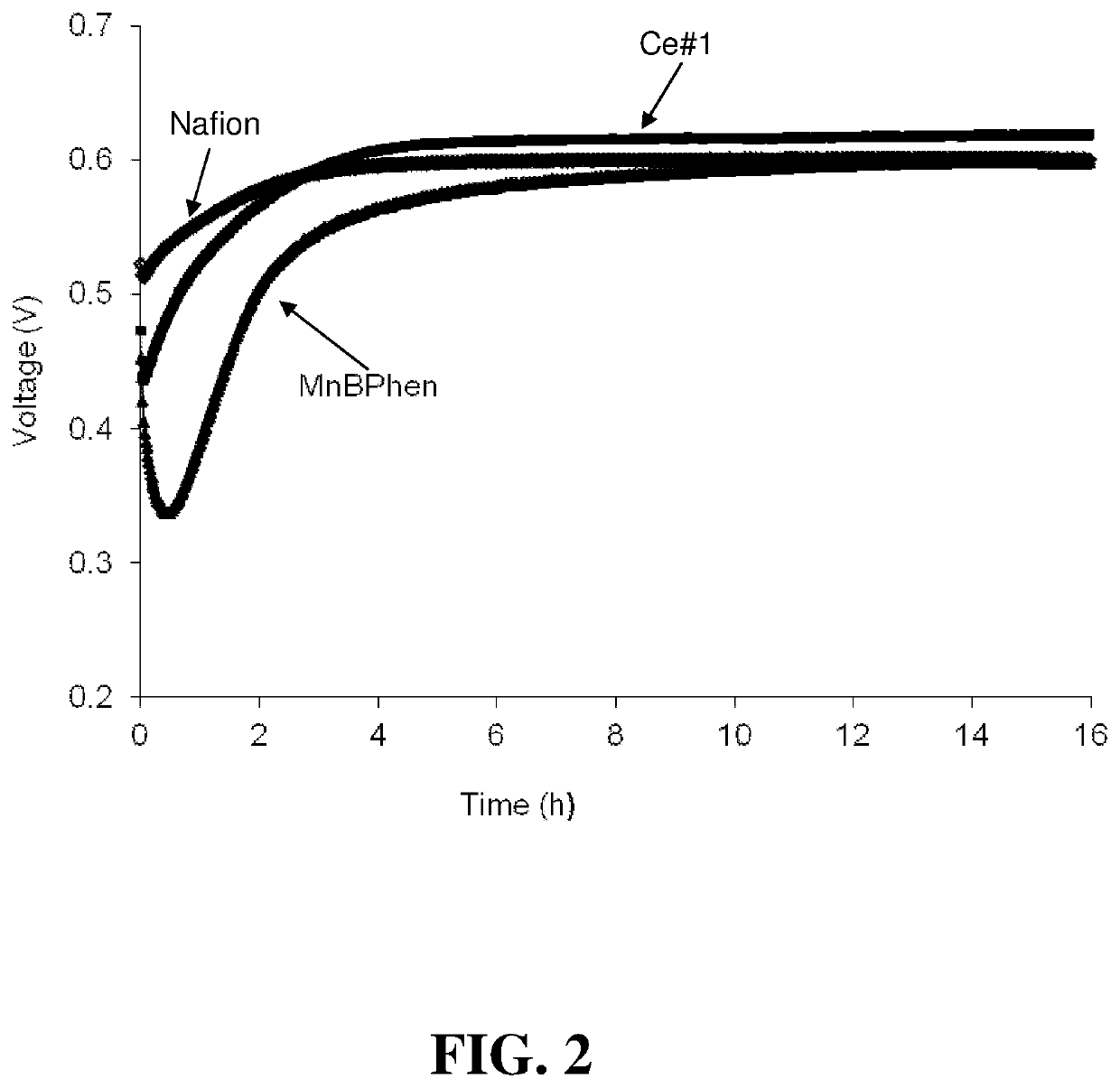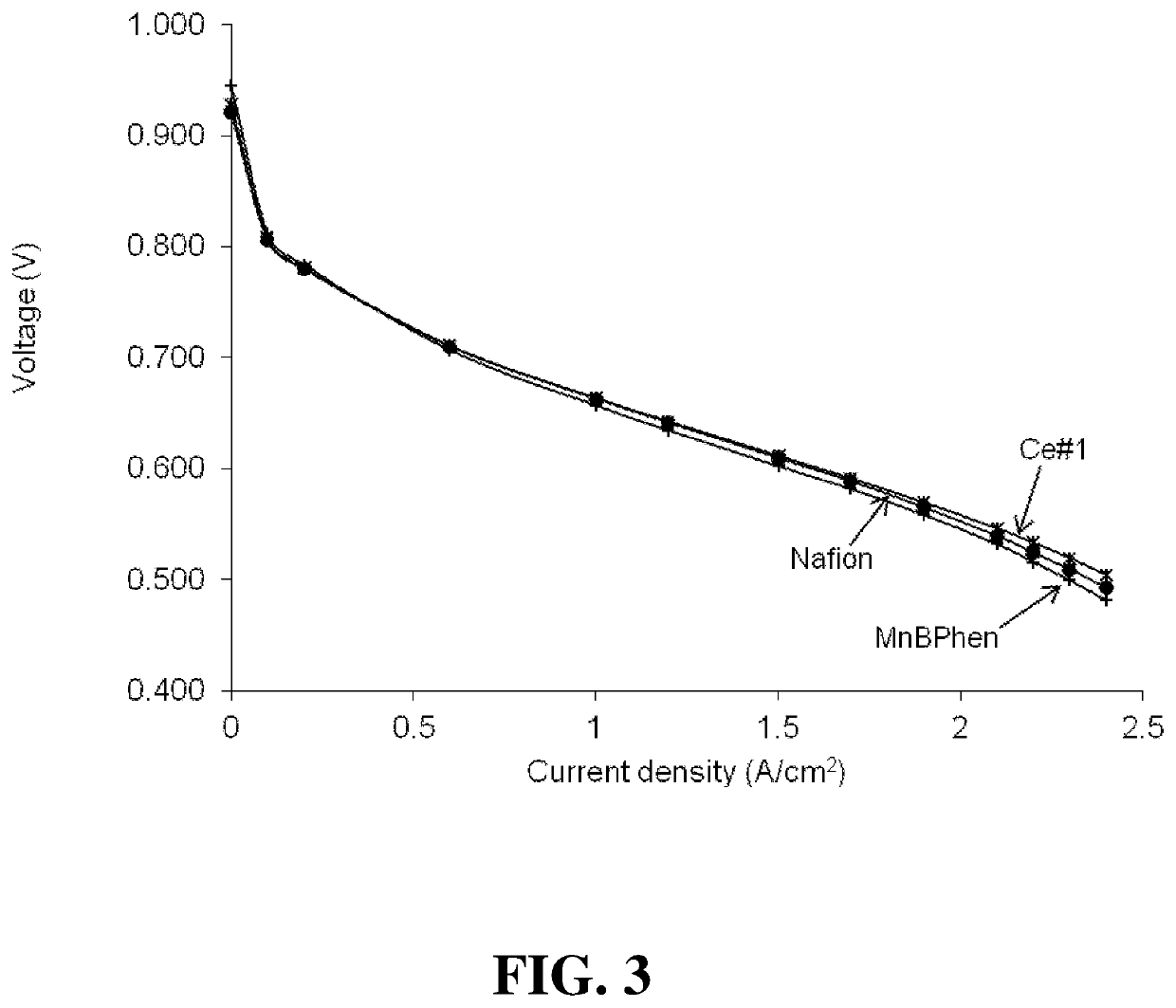Composite proton conducting electrolyte with improved additives for fuel cells
a proton-conducting electrolyte and additive technology, applied in the direction of electrochemical generators, sustainable manufacturing/processing, final product manufacturing, etc., can solve the problems of fuel cell failure, membrane degradation, and performance degradation, and achieve the effect of improving durability and performan
- Summary
- Abstract
- Description
- Claims
- Application Information
AI Technical Summary
Benefits of technology
Problems solved by technology
Method used
Image
Examples
examples
[0070]Polymer membrane samples comprising improved additives of the invention were prepared as described below. In addition, polymer membrane samples were prepared with a prior art additive and with no additive for comparative purposes.
[0071]The membrane samples were all cast from dispersions of Nafion® perfluorosulfonic acid (PFSA) ionomer with equivalent weight EW875. For the membrane samples comprising the additives, appropriate additives or additive components were added into the ionomer dispersion while stirring to obtain transparent ionomer dispersions comprising the additives. The obtained transparent solutions were then degassed, and cast on a carrier. After evaporating the solvent off, the obtained membrane samples were annealed at 150° C. for 1 hour.
[0072]The following inventive samples were prepared:
Inventive Example Ce#1
[0073]In a vial, 0.0312 grams of 8-hydroxyquinoline (0.52% weight of PFSA), 0.0180 grams of bathophenanthroline (0.3% weight of PFSA), 0.01713 grams of C...
PUM
| Property | Measurement | Unit |
|---|---|---|
| output voltage | aaaaa | aaaaa |
| temperature | aaaaa | aaaaa |
| current density | aaaaa | aaaaa |
Abstract
Description
Claims
Application Information
 Login to View More
Login to View More - R&D
- Intellectual Property
- Life Sciences
- Materials
- Tech Scout
- Unparalleled Data Quality
- Higher Quality Content
- 60% Fewer Hallucinations
Browse by: Latest US Patents, China's latest patents, Technical Efficacy Thesaurus, Application Domain, Technology Topic, Popular Technical Reports.
© 2025 PatSnap. All rights reserved.Legal|Privacy policy|Modern Slavery Act Transparency Statement|Sitemap|About US| Contact US: help@patsnap.com



